A short description of ZOP would be as follows. It consists of at least two groups of pieces. Each group is placed in a circle at regular intervals. At least one piece is common to both groups. Each group can be manipulated independently of the other groups.
The key points are:
- The pieces lie on a circle.
- Pieces are evenly distributed.
- There are at least two such groups of pieces.
- At least one piece of each group is also a piece of another group.
- Each element group can be manipulated independently of the other groups.
Fundamental scheme
Circles define a group of elements. There are 7 elements on the red circle and 5 elements on the green circle. The two blue pieces are common to both circles. When the red circle is rotated by a multiple of the distance between the elements, some of the red elements become common. The blue elements become elements of the red circle only. The same applies to the green circle. In this way, we can exchange elements between circles and change their position relative to each other.
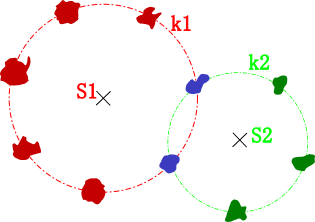
Example, when we combine multiple groups of elements.
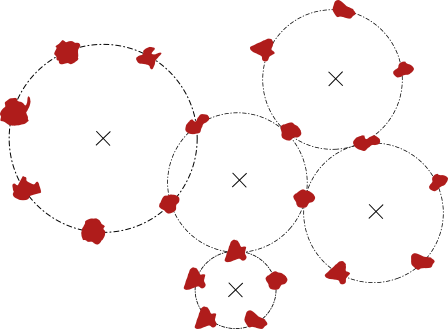
The best results are achieved when a single geometric shape is used for a single game. The best shapes are pentagons (red) or hexagons (green) or octagons (blue) or a combination of octagons (blue) and squares (light blue). Then the elements on the circle are placed side by side.
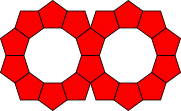


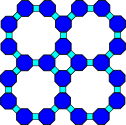
Notes: We can also have imaginary elements that hypothetically occupy space as if real components were there. These imaginary elements can be useful for saving material costs or reducing setup time when preparing large ZOP systems for play, if they are not essential to the actual game.
Holder construction scheme
Various methods can be used for ZOP construction. The following constructions seem to be the best. In the following diagrams, (A) denotes the holder, (B) the stone, (C) the rotor arm, and (D) the rotor handle.
Bottom Straight Construction
It is simple, but it is only for game types that always have the same number of shared stones. (top view)
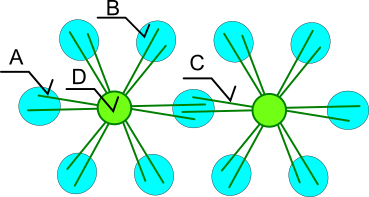
Bottom Spiral Construction
It is more complex, but it is suitable for configurations where both two shared stones and one stone are present. (top view)
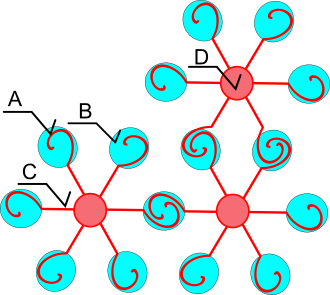
Hook-Type Construction
It is simple, but it requires great precision, and the stones must also have a more complex shape than the previous constructions. (left cut view)

Game Mechanics
Three Core Components
For optimal gameplay, the game consists of three core components, ideally similar in type and easily combinable:
Stones
These are the fundamental game pieces. They must be interchangeable and easily movable. Pentagons, hexagons, and octagons are ideal shapes, as their geometry naturally forms circles and allows for connection. However, other shapes are also possible.
Rotator
A rotator must be able to lift all the stones on its circle, including shared stones, without hindering the movement of other rotators.
Base
The base ensures precise placement of the rotators and allows for their smooth movement.